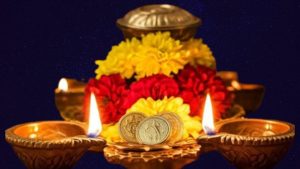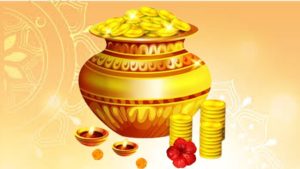Digital News Desk:
Dhanteras, also known as Dhantrayodashi, marks the beginning of the five-day Diwali festival in India. It is celebrated on the thirteenth lunar day of Krishna Paksha (dark fortnight) in the Hindu month of Kartik, typically falling in October or November. The word “Dhanteras” comes from two Sanskrit words: “Dhan,” meaning wealth, and “Teras,” meaning the thirteenth. On this auspicious day, people worship wealth, health, and prosperity, marking the first step in preparing for Diwali, the festival of lights. The festival carries rich cultural significance, blending traditions of material prosperity with spiritual well-being. Let’s explore how Dhanteras is celebrated and its importance in the lives of millions.
Historical and Mythological Significance
The origins of Dhanteras can be traced back to Hindu mythology. One of the most well-known legends associated with Dhanteras is that of Lord Dhanvantari, the god of Ayurveda and medicine. According to the scriptures, Lord Dhanvantari emerged from the ocean during the Samudra Manthan (the great churning of the ocean by the gods and demons) holding a pot of amrita (nectar of immortality). Thus, Dhanteras is considered an auspicious day to honor Lord Dhanvantari for good health and well-being.
Another popular legend is the story of King Hima’s son, whose horoscope predicted his death by snakebite on the fourth day of his marriage. To prevent this, his wife lit lamps around the house and placed heaps of gold and silver at the entrance to distract the snake with their dazzling glow. When Yama, the god of death, arrived in the form of a serpent, he was blinded by the brilliant light and the precious metals. Unable to enter, Yama left, sparing the prince’s life. This tale emphasizes the belief that lighting lamps and buying metals on Dhanteras wards off evil and invites prosperity.

Traditional Customs and Rituals
Dhanteras is a day filled with activities that are believed to bring wealth and good fortune. The main rituals and customs observed during this festival include:
- Cleaning and Decorating the Home: Preparation for Dhanteras begins well in advance. People thoroughly clean and declutter their homes, symbolizing the removal of negative energy and the welcoming of Goddess Lakshmi, the goddess of wealth and prosperity. The belief is that a clean, organized environment attracts positive vibrations. On the day of Dhanteras, homes are beautifully decorated with colorful rangolis (patterns drawn on the floor with colored powders), and doorways are adorned with torans (decorative garlands) made of flowers and mango leaves.
- Buying Precious Metals and Utensils: One of the most significant customs associated with Dhanteras is purchasing precious items, particularly gold, silver, and utensils made of metal. It is believed that buying new metal items on Dhanteras brings good fortune and financial prosperity into the home. For this reason, jewelry stores and markets are filled with shoppers purchasing gold coins, silverware, and even new kitchen utensils. Some people also buy electronic gadgets or vehicles, as it’s thought that any new purchase on this day will multiply in value.
- Dhanvantari Puja: Devotees perform a special puja to worship Lord Dhanvantari on Dhanteras. An idol or image of Lord Dhanvantari is placed on a clean platform, and offerings such as flowers, sweets, fruits, and water are presented to the deity. Special prayers are recited to seek blessings for good health and longevity. In some homes, people also perform a Lakshmi Puja, invoking the goddess to bless the household with prosperity and happiness.
- Lighting of Diyas: In the evening, small oil lamps, or diyas, are lit in and around homes to ward off evil spirits and negative energy. The glow of the lamps signifies the victory of light over darkness, and they are kept burning throughout the night. The lighting of lamps is not only symbolic but also serves as a reminder of the spiritual significance of the festival, which is to illuminate one’s inner self with knowledge and wisdom.
- Yamadeepdaan: Another important aspect of Dhanteras is the lighting of a diya for Yama, the god of death. Known as Yamadeepdaan, this ritual is performed to appease Yama and avoid untimely death. People place a diya outside their homes, facing south, as an offering to Yama, praying for protection and the well-being of their family members.

Modern-Day Celebrations and Community Involvement
While Dhanteras is deeply rooted in tradition, the way it is celebrated has evolved with time. In today’s modern world, the emphasis on shopping has increased, with malls, online platforms, and stores offering special Dhanteras discounts on items ranging from jewelry and electronics to clothing and home appliances. Many families take this opportunity to invest in new assets, symbolizing a fresh start and growth.
In urban areas, community celebrations have also gained popularity. Neighbors gather to exchange sweets, decorate their common spaces, and light lamps together. Charity has become an important part of the Dhanteras festivities, with many people donating money, food, or clothes to the less fortunate, embodying the spirit of sharing prosperity and good fortune.
You May Also Read: Property Price Hikes in Rampur: Circle Rates Increase by 10-12% from October 21








